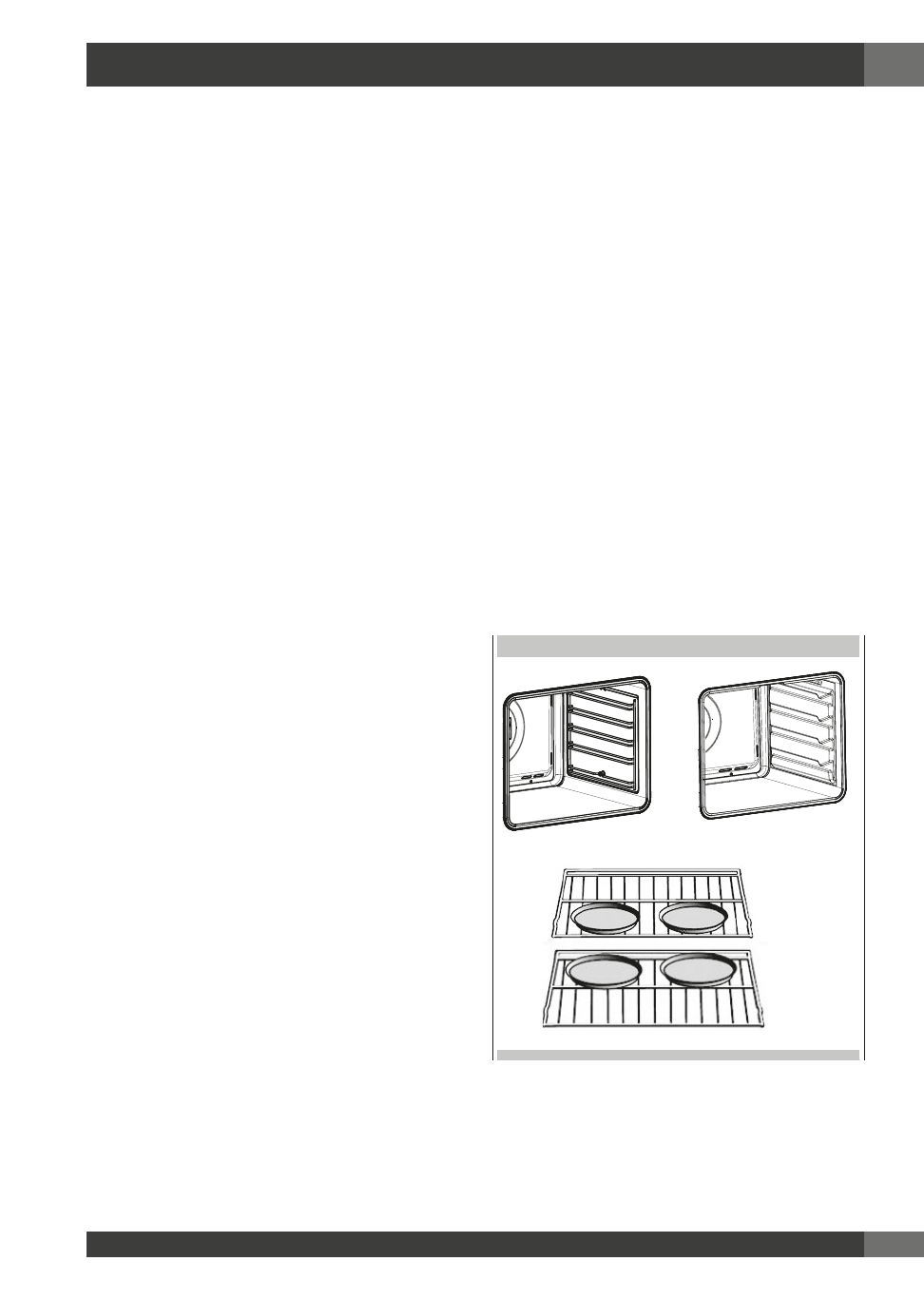14 - understanding the various oven modes, Roast tips and techniques, General guidelines – Fulgor Milano 700 Series 24 Inch Single Convection Electric Wall Oven Use and Care Manual Manuel d'utilisation
Page 23: True convection tips and techniques

EN
21
14 - Understanding the Various Oven Modes
Roast Tips and Techniques
Roasting is cooking with heated air. Both upper and lower
elements in the oven are used to heat the air but no fan is used
to circulate the heat.
Follow the recipe or convenience food directions for baking
temperature, time and rack position. Baking time will vary with
the temperature of ingredients and the size, shape and finish
of the baking utensil.
General Guidelines
• For best results, bake food on a single rack with at least 1”
- 1 ½” (2,5 - 3cm) space between utensils and oven walls.
• Use one rack when selecting the bake mode.
• Check for doneness at the minimum time.
• Use metal bake ware (with or without a non stick finish),
heatproof glass, glass-ceramic, pottery or other utensils
suitable for the oven.
• When using heatproof glass, reduce temperature by 25°F
(15°C) from recommended temperature.
• Use baking sheets with or without sides or jelly roll pans.
• Dark metal pans or nonstick coatings will cook faster with
more browning. Insulated bake ware will slightly lengthen
the cooking time for most foods.
• Do not use aluminum foil or disposable aluminum trays to line
any part of the oven. Foil is an excellent heat insulator and
heat will be trapped beneath it. This will alter the cooking
performance and can damage the finish of the oven.
• Avoid using the opened door as a shelf to place pans.
• Tips for Solving Baking Problems are found on Page 34.
True Convection Tips and Techniques
• Reduce recipe baking temperatures by 25°F (15°C).
• For best results, foods should be cooked uncovered, in low-
sided pans to take advantage of the forced air circulation.
Use shiny aluminum pans for best results unless otherwise
specified.
• Heatproof glass or ceramic can be used. Reduce temperature
by another 25°F (15°C) when using heatproof glass dishes
for a total reduction of 50°F (30°C).
• Dark metal pans may be used. Note that food may brown
faster when using dark metal bake ware.
• The number of racks used is determined by the height of the
food to be cooked.
• Baked items, for the most part, cook extremely well in
convection. Don’t try to convert recipes such as custards,
quiches, pumpkin pie , or cheesecakes, which do not benefit
from the convection-heating process. Use the regular Bake
mode for these foods.
• Multiple rack cooking for oven meals is done on rack
positions 1, 2, 3 , and 4. All four racks can be used for
cookies, biscuits and appetizers.
- 2 Rack baking: Use positions 1 and 3.
- When baking four cake layers at the same time, stagger
pans so that one pan is not directly above another. For
best results, place cakes on front of upper rack and back
of lower rack (See graphic at right). Allow 1” - 1 ½” (2,5
- 3cm).air space around pans.
• Converting your own recipe can be easy. Choose a recipe
that will work well in convection.
• Reduce the temperature and cooking time if necessary. It
may take some trial and error to achieve a perfect result.
Keep track of your technique for the next time you want to
prepare the recipe using convection.
• Tips for Solving Baking Problems are found on Page 34.
Foods recommended for Convection Bake mode:
Appetizers Biscuits Coffee Cakes
Cookies (2 to 4 racks) Yeast Breads
Cream Puffs
Popovers
Casseroles and One-Dish Entreés
Oven Meals (rack positions 1, 2, 3)
Air Leavened Foods (Soufflés, Meringue, Meringue- Topped
Desserts, Angel Food Cakes, Chiffon Cakes)
RACK POSITION
1
2
3
4
1
2
3
4
5
Rack 3
Rack 1